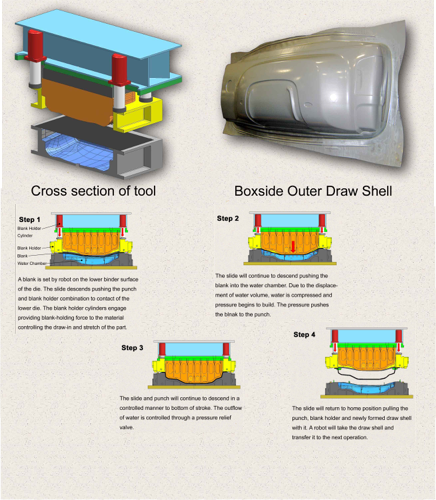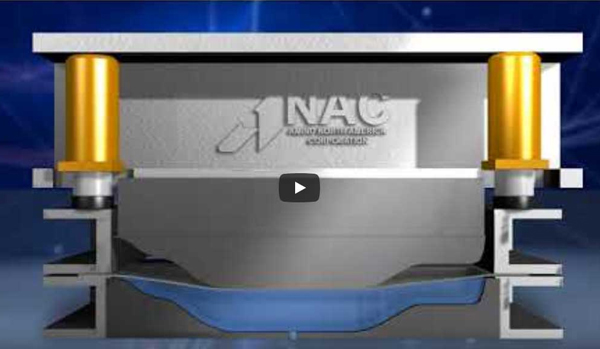Hydroforming
 Amino North America Corporation (ANAC) uses advanced sheet hydroforming technology to produce automotive body panels and other components. Our fully equipped manufacturing plant features the world’s only facility dedicated to sheet hydroforming production, as well as the only presses in North America that can handle it. As experts in hydroforming on specialty items, we’re proud to serve clients in a range of industries, including household appliances, heavy-duty trucking, agriculture, and construction.
Amino North America Corporation (ANAC) uses advanced sheet hydroforming technology to produce automotive body panels and other components. Our fully equipped manufacturing plant features the world’s only facility dedicated to sheet hydroforming production, as well as the only presses in North America that can handle it. As experts in hydroforming on specialty items, we’re proud to serve clients in a range of industries, including household appliances, heavy-duty trucking, agriculture, and construction.
Hydroforming Explained
Hydroforming is a metalworking method used to shape ductile metals into strong yet lightweight parts. Most users of it depend on sheet hydroforming (or fluid forming), a process during which pressurized water is used to form sheet metal. This cost-effective strategy is most widely employed by automakers, which rely on it to minimize the weight of unibody vehicles without sacrificing strength.
Although fluid forming presses perform the same function as conventional presses, they’re founded on different mechanisms. In contrast to conventional stamping presses, sheet hydroforming presses use only a male die, with the job of a female die assigned to a chamber of pressurized water. The punch, which contains the shape of the part, pushes the material into the water chamber, while a pressure relief valve controls the flow out of the lower side. The system’s computer monitors the blank holder force and the water pressure, which can be adjusted and controlled throughout the full stroke of the press.
Hydroforming presses enable users to evenly distribute stress throughout the part. In the process, it reduces the localized thinning and stress concentrations which can occur with conventional stamping. It also allows for more complex shapes and a deeper draw in a single stroke.
Fluid forming is ideal for forming sheet steel as well as lightweight materials such as aluminum. Since it entails minimal contact, it also results in less scratching and damage to the surface of the metal.
 The Advantages of Hydroforming
The Advantages of Hydroforming
Sheet hydroforming offers much higher formality than conventional stamping. Unlike conventional stamping, which can cause thinning and splits can due to forming limitations at the punch shoulder and die radius, sheet hydroforming prevents localized thinning by pressing water firmly against the punch, which causes the blank to stretch evenly across the entire surface. Since the blank is pushed away from the die radius, it also minimizes shock lines and thinning.
Other advantages of hydroforming include:
- Inexpensive tooling costs and reduced set-up time
- Lower development costs
- The elimination of shock lines, draw marks, wrinkling, and tearing associated with matched die forming
- Ideal for complex shapes and irregular contours
- The ability to optimize materials and blank thickness specifications for the purpose of cost savings
For years, ANAC has relied on hydroforming to solve a broad range of manufacturing challenges. We don’t just use hydroforming to form metals. We also use it to form complex parts that conventional presses simply cannot produce with a single stroke. With years of experience and a team of trained experts on staff, we’re able to work in low volume without sacrificing quality, ensuring that we can work according to any customer’s specifications.
Having the only presses in North America for sheet hydroforming, ANAC is uniquely positioned to offer customers top quality, cost-effective solutions for forming complex or difficult body panels for low-volume, niche, and specialty vehicles. If you’d like to learn more about our sheet hydroforming services or explore working with us, contact us today!


 The Advantages of Hydroforming
The Advantages of Hydroforming 